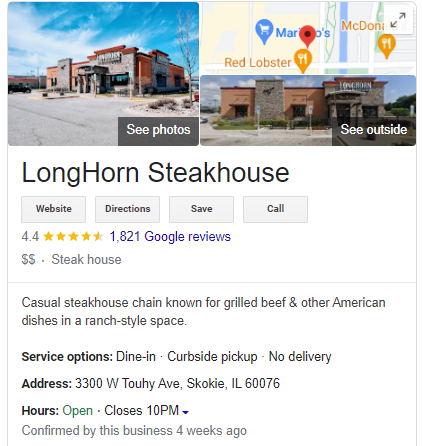
Meeting the Heightened Demand for Timely Local Information
This month on Street Fight, contributors are offering thoughts about the long-term effects of the pandemic on consumer behavior and expectations. One thing we all experienced very early on in 2020, as Covid became a reality, was that the demand for accurate, up-to-the-minute information reached a pitch of intensity far above previous norms. This demand for information extended in multiple directions; people wanted to know what Covid was, how to identify its symptoms, and how fast it was spreading; they wanted detailed advice on health and safety precautions; they wanted the latest updates from governmental sources on plans to combat the spread and progress toward recovery.
With businesses closing temporarily due to government mandate, or changing their offerings or hours significantly in response to the pandemic, consumers turned to local search too with a heightened, even sometimes critical need to access the latest information. The range of consumer information needs caught many local publishers off guard. For a well-known grocery chain we work with, the launch of safe shopping hours for seniors in response to Covid got off to a bumpy start when many senior shoppers appeared at the store, saw the exterior signage announcing special hours, and complained to management that this information wasn’t available online. “But it’s right there on our website,” the managers said, to which the customers replied, “We don’t look at your website. We use Google.”
Google, Yelp, TripAdvisor, Bing, Foursquare, and Facebook all made significant changes to their business profiles and search functionality in response to Covid, raising the bar for accurate, granular information about local businesses. In response to examples such as the story I’ve just shared, Google implemented More Hours, a feature that allows businesses to specify distinct hours for drive-through, delivery, pickup, online services, and several other options in addition to special hours for seniors. While responding to immediate needs such as the need to report senior shopping hours, Google broadened the update to include special hours for other services, having been clued in that consumers would find this information useful.
In making these kinds of changes (and doing so in response to real consumer demand signals), publishers raised the bar for breadth, depth, and timeliness of local information, setting new benchmarks for the future. Consumers didn’t stop relying on granular local information when Covid concerns began to lessen; instead, they’ve grown to rely on Google and similar platforms more than ever.
Google’s sensitivity to the heightened consumer demand for detailed, up-to-date information has been exemplified recently with the broad rollout of notices in Google profiles about when and how data was last updated. Such notices were first spotted by Thibault Adda, who shared on February 24 a screenshot on Twitter of a LongHorn Steakhouse location where underneath the hours Google published a notice: “Confirmed by this business 4 weeks ago.” Hours are a notoriously unreliable data point, subject to change and often appearing differently on different platforms, so it makes sense that Google would see the need to reinforce their accuracy.

Soon afterward, users began to see a range of notices with different wording appearing in multiple listings. Barry Schwartz’s writeup on Search Engine Roundtable lists more examples of “Confirmed by this business,” along with “Confirmed by phone call 8 weeks ago” and a mysterious “Confirmed by others 3 weeks ago,” all referring to hours of operation. Soon these notices became ubiquitous; today, I’m hard pressed to find a Google profile that doesn’t include an indicator of when and how its hours were last updated.
The range of update methods deserves mention. “Confirmed by this business” seems to indicate either that the business updated its own information, or that it affirmed an update provided by Google users. Barry Schwartz speculates that “Confirmed by phone” means Google has used its Duplex voice AI technology to call the business and double check that its hours are correct. “Confirmed by others” may mean that Google users have provided updated information without input from the business.
These notices appear mostly to measure update timeframes in weeks, but I encountered a similar update notice that was much more up-to-the-minute when I was searching the other day for the weekend hours of a local pharmacy. Because the pharmacy offers Covid vaccinations, a section of its business profile is devoted to vaccination info. Within that section I saw the following notice: “Has appointments (3 min ago).”

Due to the critical nature of appointment availability for vaccinations, and to the pace with which such information changes, Google has sidestepped the typical routes and has plugged into a feed or API, likely established with the cooperation of CVS. This is not a new strategy on Google’s part — for a few years now, Google has tapped live feeds to populate room rates for hotels as well as current gas prices. But the widening scope of near-real-time local information is worthy of note; if consumers begin to expect up-to-the-minute accuracy, “Confirmed by this business 4 weeks ago” may soon seem not good enough.
Businesses should take note of the fact that Google will not wait for them to answer the call for updated information. If the business doesn’t provide such data proactively, Google may let the user community do so on its behalf, whether or not such updates are accurate. Active participation and frequent updates are the only means of maintaining control over your local information.


